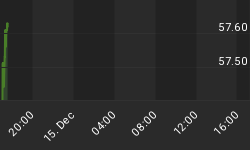Target2 imbalances in the eurozone continue to mount. The ECB itself now has the third largest negative balance following Italy and Spain.
Target2 is a measure of capital flight. Those needing a further explanation of Target2 may wish to consider Reader From Europe Asks "Can You Please Explain Target2?"
Data for the following charts and tables is from ECB Target Balances. Neither the ECB nor Eurozone officials likes to discuss these numbers for obvious reasons.
Although it's June, the latest data is for April.
Here is the ECB's chart with my annotations in blue.

Tracking 20 lines by colors is more than a bit problematic. The following chart breaks out the key creditors and debtors.
Largest Creditors and Debtors

Growing Negative Imbalance at the ECB

How Does the ECB Get a Negative Balance?
Pater Tenebrarum at the Acting Man blog explains via email:
ECB's "QE" program is for the most part in practice actually executed by the national central banks (NCBs). Thus, the CB of Spain will buy Spanish bonds that are eligible for the program, the Bundesbank will buy German bonds, etc. - the ECB together with the EU's National CBs forms the "ESCB" (the "European System of Central Banks"), while the ECB and the NCBs of members of the euro zone form the so-called "Euro System".
The QE program has been decided on by the ECB, but is run by the Eurosystem. While most of the asset purchases are executed by the NCBs, not all of them are. The ECB itself also buys various assets (everything from sovereign bonds to covered bonds, ABS, corporate bonds and agency bonds). The ECB's purchases are distributed across the Eurozone. So what happens when the ECB e.g. purchases €100 m. in agency bonds in Spain?
Accounting-wise, the ECB is treated as if it were the CB of a different, independent country. Remember, the money it uses to effect the purchase is created by the push of a button, literally from thin air. Other than that though, it cannot be differentiated from money someone had to work for and has saved. If the ECB now makes the above example purchase, it is no different from Spain's point of view than a bond purchase by some other, normal foreign investor.
Hence, it is akin to a capital import, and Spain's TARGET-2 balance will improve by the €100 m. But when the TARGET balance of one Eurosystem NCB improves, there has to be a negative, offsetting TARGET balance created at some other NCB. Only, in this case, it is not another NCB, but the ECB itself that gets to record the offsetting negative balance.
So the ECB's balance sheet will now show the Agency bond as an additional asset and the negative TARGET balance as an offsetting liability. At the Bank of Spain, the mix of liabilities will change, since its overall TARGET balance remains negative. It will record a new reserve deposit by the commercial bank which administers the account of the seller of the bond as a new liability, while the offsetting gain in its TARGET balance will lowered its TARGET liabilities by the exact same amount. So instead of owing the money to another NCB, the Bank of Spain now owes it to a commercial bank in Spain.
Improvements in Spain and Italy (except there haven't been any) are masked by the growing imbalance at the ECB itself.
















